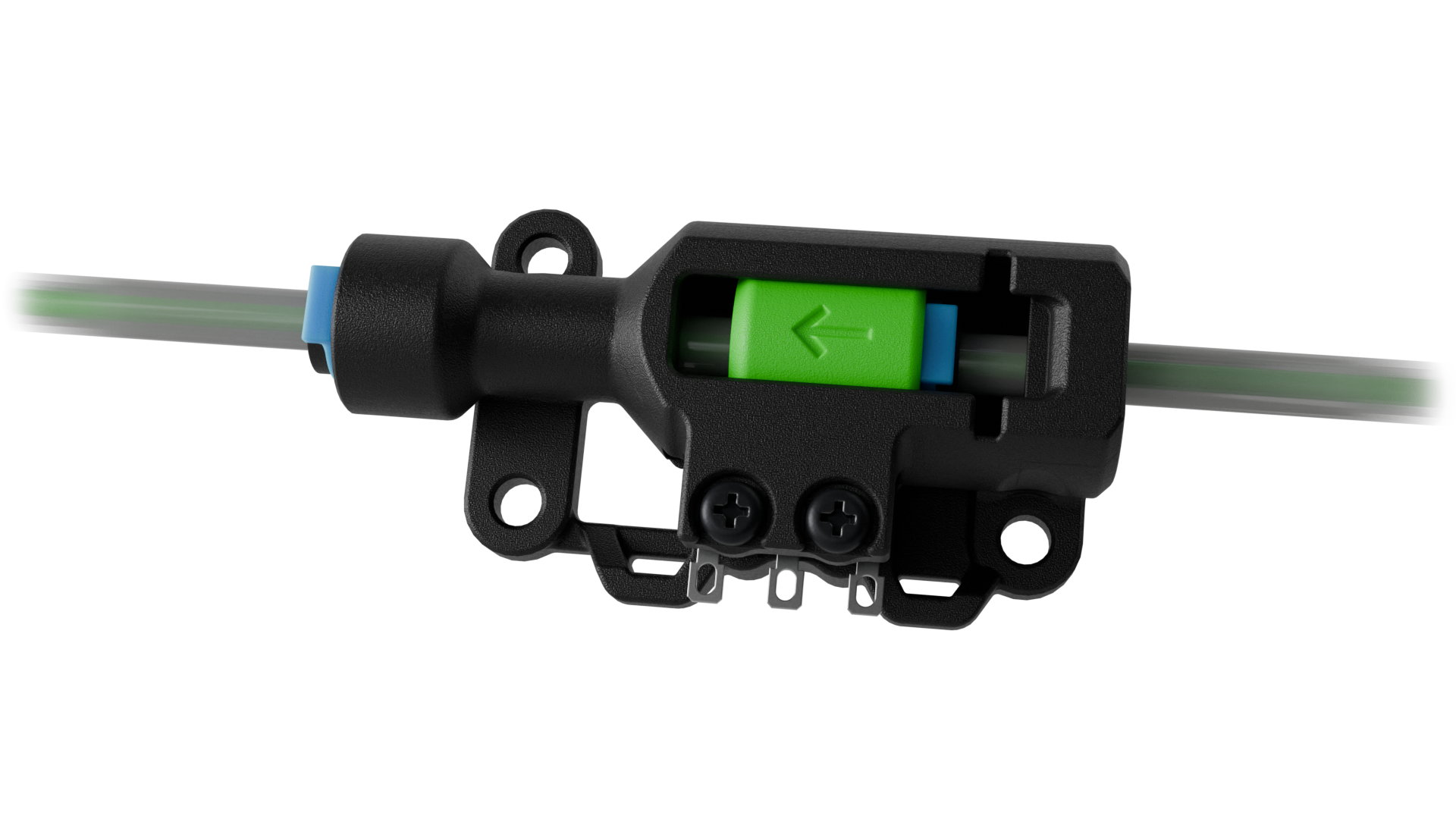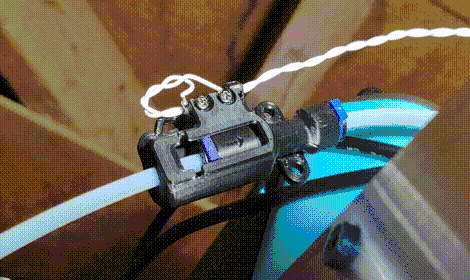Belay is a sensor for FFF 3D printers for keeping a secondary extruder in sync with the primary extruder, avoiding error accumulation regardless of how long a print may be. Either a Trad Rack or a normal extruder can be used as the secondary extruder. See purpose and how it works for more details.
This project is inspired by the Filament Buffer used by Bambu Lab on their X1 and P1 Series printers.
Our discord server can be found here:
See the Quick Start document to get started.
Long filament paths or very heavy spools can cause extra resistance in filament movement, potentially causing the printer's extruder to struggle. One solution is to add a secondary extruder in series with the primary extruder to take some of the load; often the secondary extruder is synced directly to the primary extruder.
However, without a feedback system, the 2 extruders may gradually
drift out of sync from even a small mismatch in how well their
rotation_distance calibrations match the actual movement ratios.
Longer prints will build up to a larger mismatch, which may add extra
resistance to the filament's movement and eventually cause one of the
extruders to slip or skip.
Belay prevents error accumulation by dynamically adjusting the
rotation_distance setting of the secondary extruder to prevent
buildup of excess slack or tension in the filament between the 2
extruders. The bowden tube going from the secondary extruder to the
primary extruder is split into 2 pieces, and Belay goes between them.
When extruding forward, if the tubes before and after Belay
start getting pulled together, it sets a higher multiplier (lower
rotation_distance) for the secondary extruder. If the tubes start
getting pushed apart, it sets a lower multiplier. The multipliers are
reversed when extruding backward.
The following gif shows Belay in use during a print with exaggerated multipliers of 1.30 and 0.70 to illustrate its movement:
(With the default multipliers of 1.05 and 0.95, the movement of the slider is much slower and shorter and becomes difficult to see, at least without very high extrusion flowrates)
Belay is currently in open alpha. The code has been in use by a few people using Trad Rack and has been working well so far, but the current mechanical design is relatively new and may change significantly.
Some things we may want to try in the future:
- Using an analog hall effect sensor (or similar) and PID control, instead of the digital switch and bang-bang control that is currently used
- Using the sensor to detect clogs/tangles (for example by detecting if the slider reaches either end of its travel via a 2nd switch or by replacing the digital switch with an analog one, using an analog sensor to determine if the slider is moving too fast for the commanded extrusion speed, etc.)



